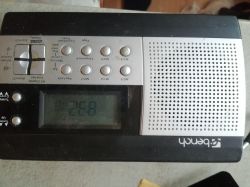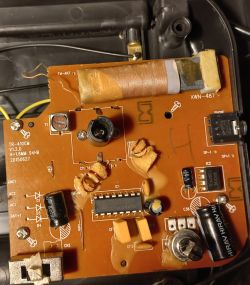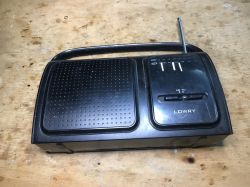 .
.
Some time ago I showed the Fonics FN-105 radio, which turned out to be based on the CD7613CP chip, a so-called 'one-chip radio'. It even had an audio amplifier in it. Now it is time for another similar radio, but this time built slightly differently. We will look inside and analyse the PCB.
Previous related topic in the series: Fonics FN-105 - CD7613CP .
This radio also belongs to a friend from the allotments and it too has this distinctive modification with a switch on the cable. The friend must like these switches. You can get quite a surprise when you open the battery slot:
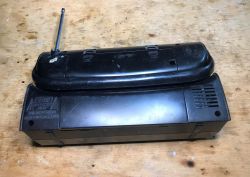 .
.
Who would have expected:
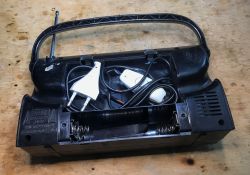 .
.
Removing the case, inside is the speaker, one PCB and the mains transformer:
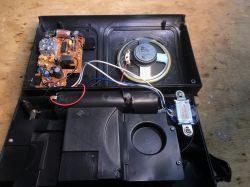 .
.
Interestingly, the transformer has a built-in thermal fuse:
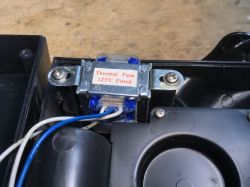 .
.
I wonder how effective it is.
Now the PCB itself, the layout is even simpler than before, apart from the obvious presence of a ferrite antenna and an adjustable capacitor used for tuning, here we have a headphone socket, a couple of properly protected air-core coils and this time two chips: CD2003GP and D2822A
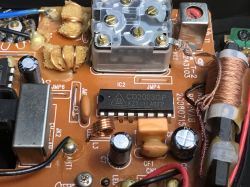 .
.
Catalogue note:
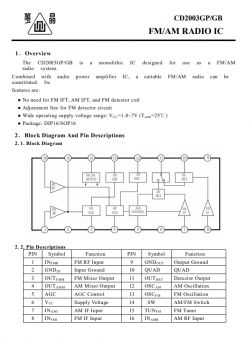 .
.
Example application diagram:
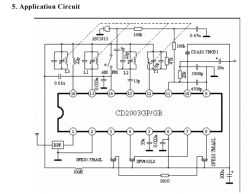 .
.
I think I even know this schematic from somewhere, haven't I done a DIY like this before? But let's not forget the D2822A amplifier (looks similar TDA2822M?):
 .
.
This die can be used in both mono and stereo applications:
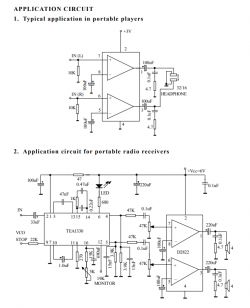 .
.
Another look at the underside of the PCB - there are some SMD components here, this explains why the board is slightly smaller than I would have expected. The rectifier diodes are also surface mounted.
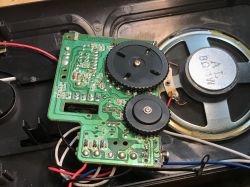 .
.
By the way, the diodes are three and have small ceramic capacitors in parallel.... one of them probably protects the batteries, so either from the transformer there must be a single pole rectifier or the transformer is tapped?
Judging by the fact that only two of the diodes have a capacitor, I would bet that there is a transformer with a split secondary winding....
And I think that's it - there's one more photo of the whole PCB left:
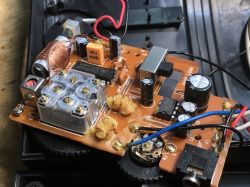 .
.
Summary .
This is interesting, the previously described Fonics FN-105 was based on a single chip, the CD7613CP, and had no SMD components, here they have introduced a bit of SMD already, but the amplifier and radio circuit are separate.
The CD2003 used here is a classic, and I have seen DIY projects/kits to assemble on it, including even a project with a frequency display:
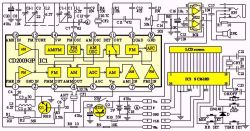 .
.
Here the SC3610D is used in conjunction with the CD2003. If you are interested, you can look for this kit to buy online, although I would rather be tempted to DIY modify a ready-made radio.... maybe it would be possible to buy an SC3610D, only probably worse in terms of cost, all of which would make it just art for art's sake.
Alternatively, you could always just buy a ready-made FM Radio Kit and put it together, maybe some readers have played around like that? From what I remember, I once assembled a simple radio myself, also on a ready-made IC, only now I can't remember if it was a CD2003 or another one...
Cool? Ranking DIY Helpful post? Buy me a coffee.








